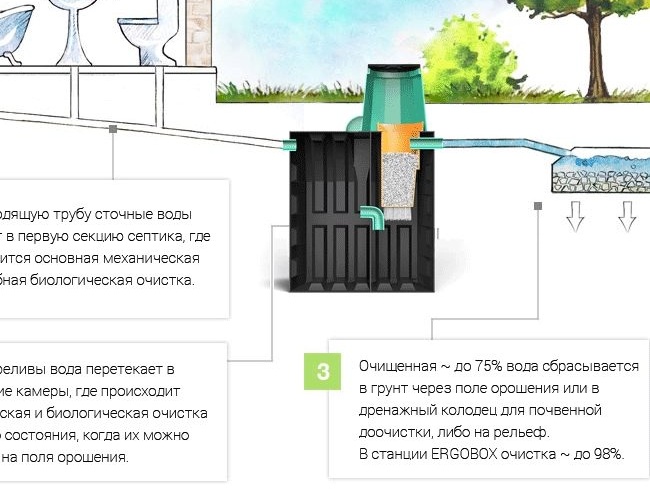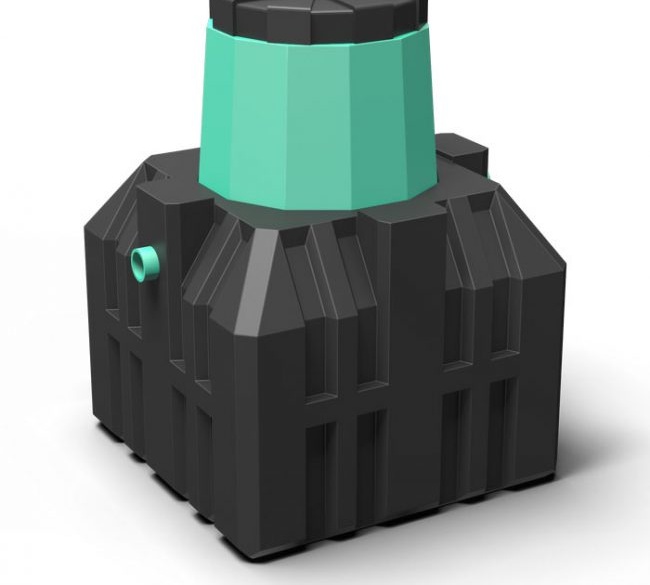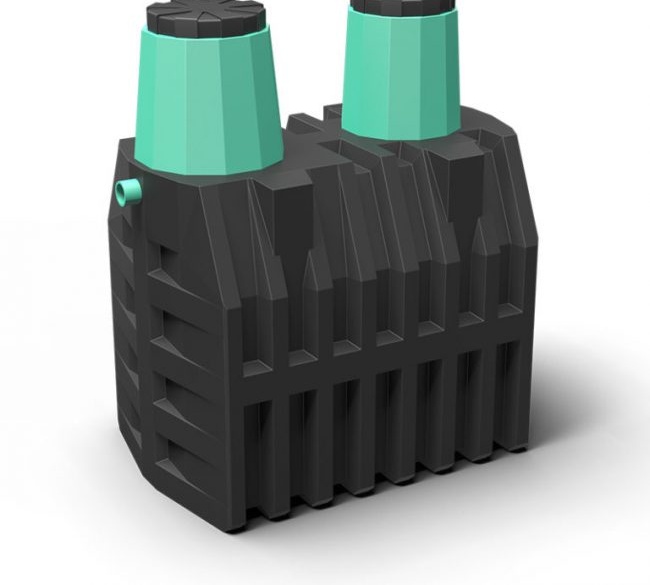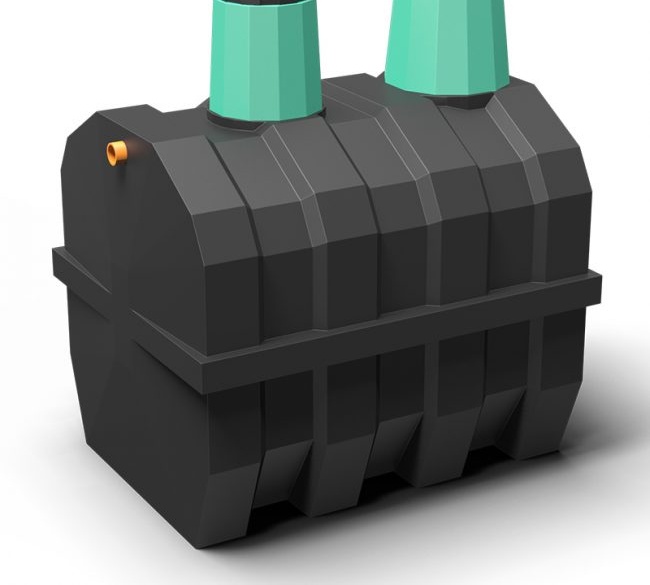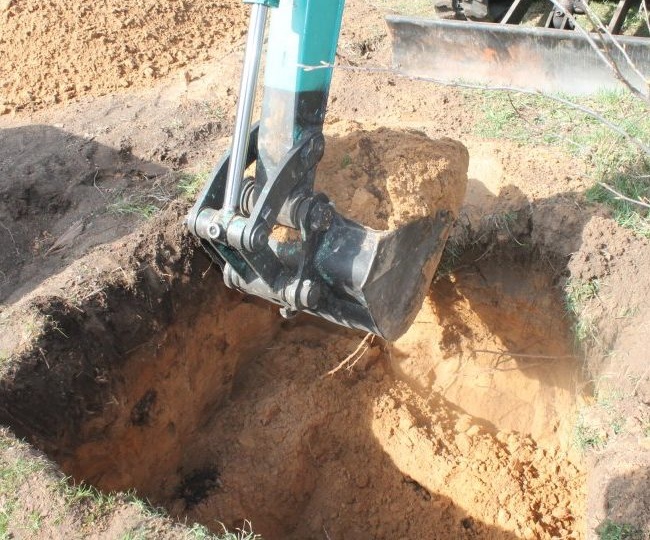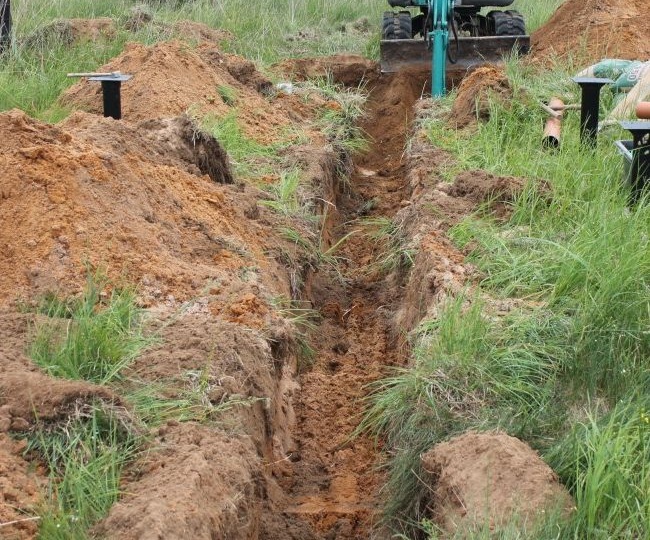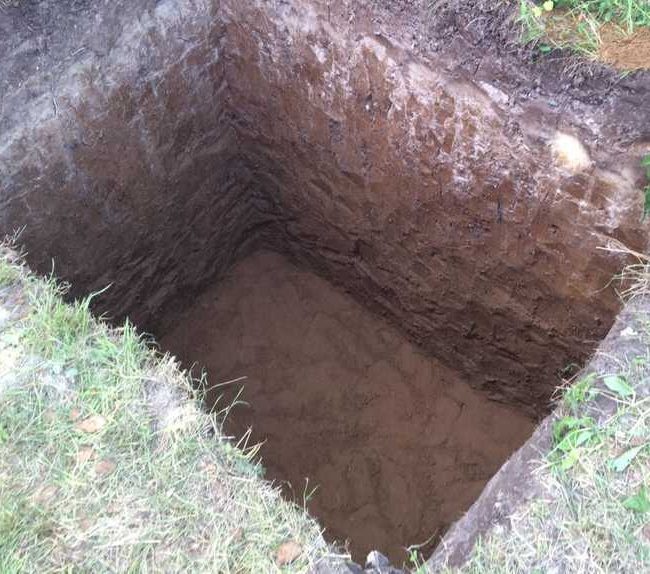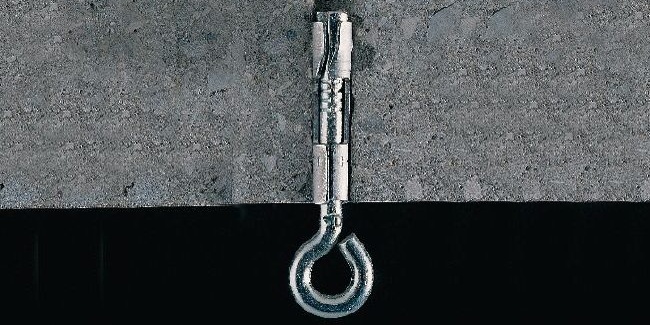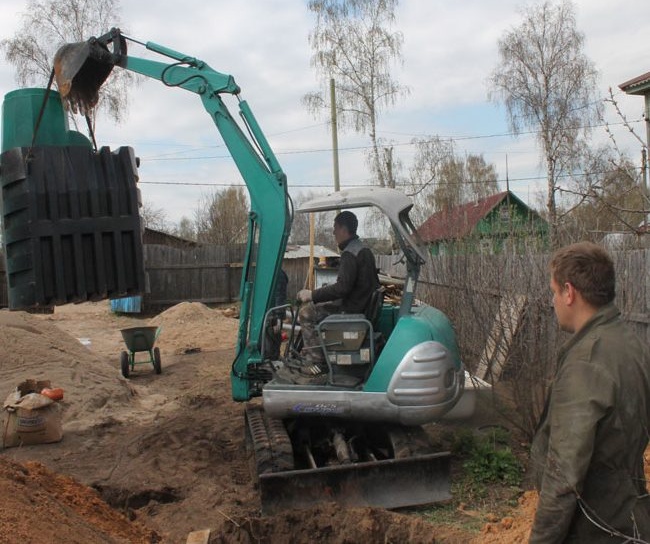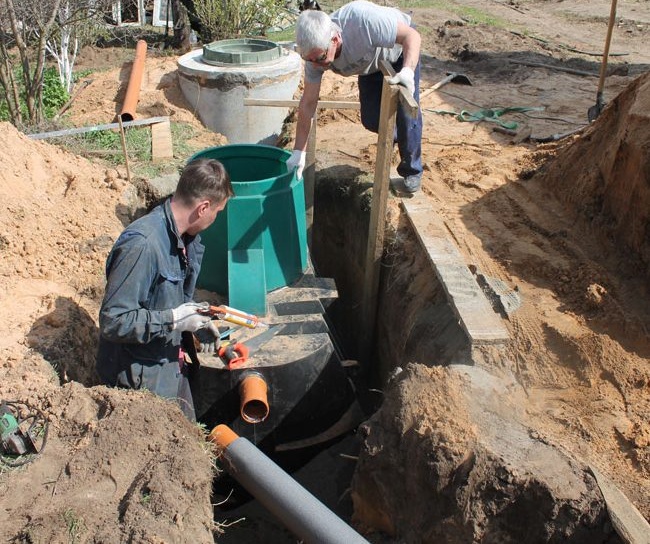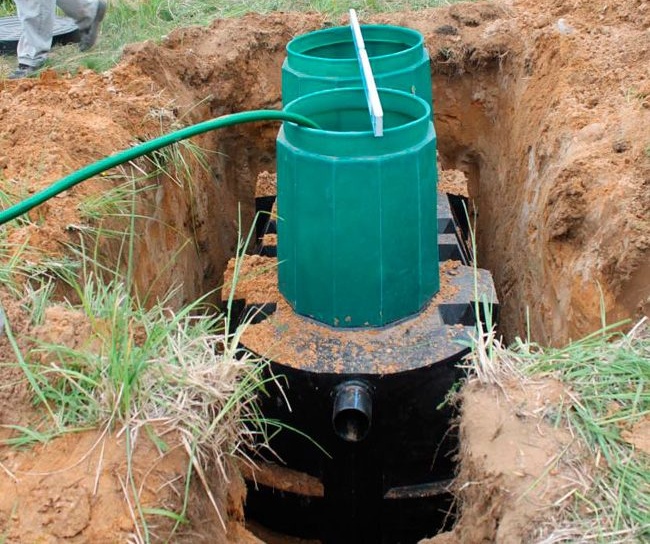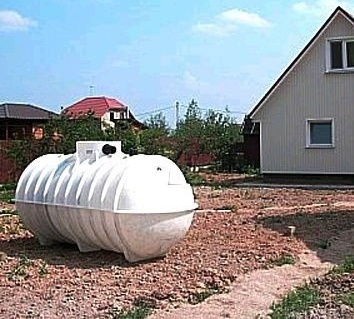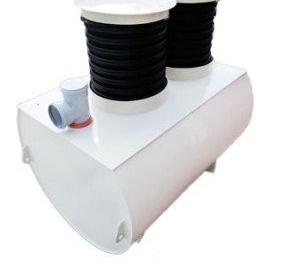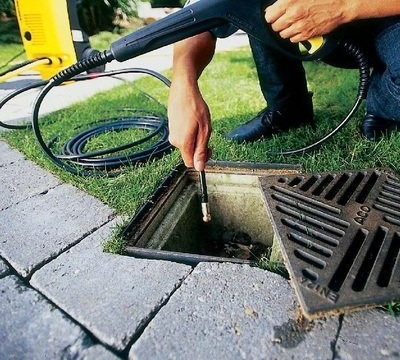Rules for the installation and maintenance of Termit septic tanks
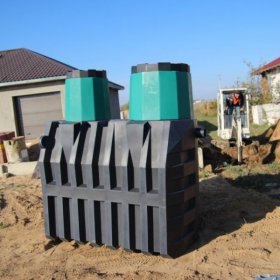
Septic tank Termite is an independent sewage system for wastewater treatment by sedimentation, filtration and partial decomposition of solid particles by bacteria. These septic tanks are used where there is no centralized drainage system. The design collects and absorbs pollution so effectively that purified water can be used for watering beds, flower beds, as well as for technical needs.
Content
The device and principle of operation of the Termit septic tank
Wastewater treatment plants are made in the Russian Federation. They meet sanitary and construction requirements, do not harm the environment. The work is based on the principles of purification at the mechanical and biological levels. Usually in the "Termite" two or three compartments. When passing through them, polluted waters are purified and clarified.
Septic tank consists of the following compartments:
- storage chamber - it is used to collect effluents and their sludge, for sedimentation of solid particles;
- bacterial filtration compartment - in this reservoir, previously clarified waters are additionally purified by bacteria that live on special brushes;
- additional sump - this compartment is not available in all versions of the Termite. In it, the sewage settles again, and the pollution settles to the bottom in the form of activated sludge.
All tanks are connected to each other by overflow - a special connecting pipe.
The method of operation of the unit with the simplest cleaning system:
- Pollution flows from the sewer system to the first sump, where large and heavy particles settle.
- Upon reaching the overflow level, they move to the next compartment. The location of the overflow prevents large contaminants from flowing further. They remain in the first chamber.
- In the second compartment, the effluent is purified due to the activity of microorganisms, due to which the remains of the mud decompose into water and nitrites. The liquid rises up and is filtered, after which the water can be considered as purified by 65 percent. Due to the activity of anaerobic bacteria, an unpleasant “aroma” is possible.
- The fluid is in the irrigation dome - infiltrator. After passing through an additional soil filter, the quality of liquid purification is about 95 percent. Water is used to water the garden or garden, since it can already be considered safe.
The device does not require electricity to operate. Non-volatility is one of the main advantages of Termite cleaning devices.
The lineup
Termites have a large number of models, the choice is determined by the conditions of use.The models differ mainly in the volume of the septic tank itself, and it is indicated in the name of each of them in cubic meters.
Termite-Profi 1.2 (for a family of two):
- size 1.31 x 1.16 x 1.55 m;
- productivity of 350 liters per day;
- weight about 80 kg.
Termite-Profi 2 (for a family of 2-3 people):
- size 1.45 x 1.155 x 2.05 m;
- productivity of 700 liters a day;
- weight 105 kg.
"Termite-Profi 2.5" (for a family of 4-5 people):
- size 1.82 x 1.155 x 2.005 m;
- productivity of 1,000 liters per day;
- weight is 120 kg.
Termite-Profi 3 (for a family of 5-6 people):
- dimensions 2.21 x 1.405 x 1.905 m;
- productivity of 1,400 liters per day;
- weight 155 kg.
"Termite-Profi 3.5" (for a family of 6-7 people):
- size 2.23 x 1.2 x 2.005 m;
- productivity of 1,800 liters per day;
- weight 175 kg.
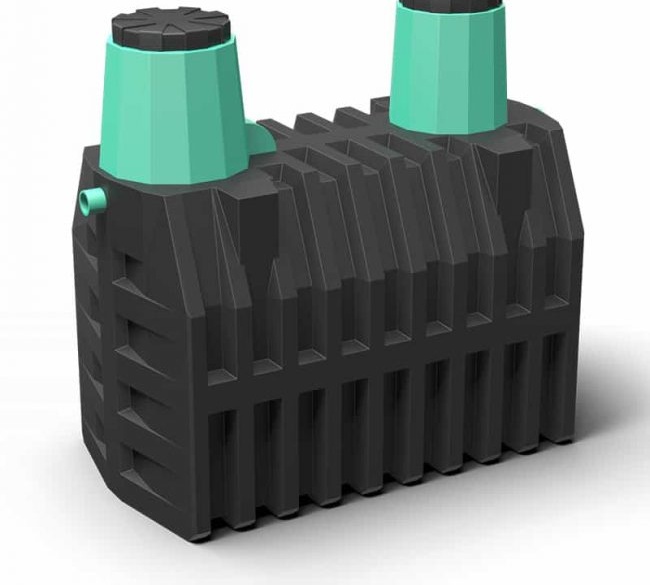
“Termite-Profi 3.5” has a larger volume in contrast to the previous tank model and is designed for 6-7 people
"Termite-Profi 5.5" (up to 11 people, usually put in a mini-cafe or in boarding houses, camp sites):
- dimensions 2.22 x 1.65 x 2.4 m;
- productivity of 2,500 liters per day;
- weight - 260 kg.
Advantages and disadvantages of using the Termit septic tank
The advantages of the device include:
- autonomy and non-volatility;
- strength and resistance to pressure and temperature extremes;
- ease of maintenance;
- durability;
- high purity of water at the exit.
Of the minuses note:
- the risk of wall deflection due to a rectangular structure;
- possible unpleasant odor. This disadvantage is eliminated by the purchase and installation of special filters.
Owner reviews
The positive and negative sides of any device are easier to evaluate by the feedback of those who have already experienced its work on themselves.
I put a septic tank "Termite-Profi 2.5". Due to the uneven thickness of the walls, it was necessary to mount a stiffening frame so that the installation was not forced by the ground. The work has no complaints. It costs more than 12 months, the sediment has not yet been pumped out.
In my dacha, the subsoil waters are so close to the surface that I can’t even dig a simple hole. Therefore, for a long time I picked up a suitable septic tank. I chose Termite-3, with the installation of an intermediate well and a pump for pumping water from it into the infiltrator. Of course, I had a chance to work. The infiltrator fell asleep and planted grass. A green hill has come out and looks beautiful.
I want to thank the manufacturers of Termit septic tanks. The treatment plant was installed two years ago. There was no problem with him all the time. In the country, we live seasonally, and they delivered us Termit 1.2 with a connection to the house, it still works without complaints.
The first time our family had independent sewer systems was three years ago: there was a need for urgent installation of a septic tank. We bought Termite-Profi 1.2. Four days later, he was delivered to us and immediately began installation. There are no comments on the work, a year later they pumped out. As a result, we are thinking about installing the same in the country. By the way, no odor was observed, either before or after installation.
Installed a five-cube drive "Termite". They anchored to a concrete slab, sprinkled with a mixture of sand and cement on half of the tank, and poured the remainder with concrete to reinforce it from breaking through the ground. Nine months after pumping, the tank began to crack. In the area, subsoil water is at the level of 1.20 m, and the tightness is lost.
Do it yourself septic tank Termite
You can install the Termite treatment system and the infiltrator yourself.
The foundation pit is more profitable and easier to dig not manually, but using special equipment. Additional equipment will simplify the process of immersing the device in the pit. Backfilling of the tank is done manually.
Necessary materials, tools and accessories
- shovel;
- container for mixing cement-sand mortar;
- laser or hydraulic level;
- roulette;
- fan pipes for wastewater supply and discharge;
- fitting;
- cement;
- sealant;
- concrete blocks;
- sand.
Preparatory stage
First of all, it is necessary to prepare a pit for placement of a cleaning device:
- Dig a hole in the ground with a length and width exceeding the tank dimensions by 30 cm. Make the depth 50-100 mm greater than the height of the Termite. Level the walls and bottom of the pit with a shovel, remove large stones and debris.
- Dig a trench under the pipe from the house, observing the slope in accordance with construction standards. For a pipeline with a cross section of 110 mm, often used for these purposes, the slope is 20 mm per linear meter.
- Close the bottom of the trench with a layer of sand about 30 cm thick. You can finally level the sand in the pit with the help of a level - this is faster and easier than with a shovel.
- Immerse concrete blocks at the bottom of the pit (easier with the help of special equipment). They are needed to keep the septic tank in place during melting snow or heavy rain, when the ground water rises. Without anchoring, there is a risk of the unit floating up with possible damage to its own walls and sewer lines. As fasteners, anchor hooks and chains are used that are mounted to the blocks.
When installing a treatment plant in the northern regions, the top of the cleaning device and the sewer pipe must be insulated.
Installation of a treatment plant
It is easy to deliver the septic tank to the installation site. It weighs a little, even two people can do it. Further installation steps look like this:
- Using special equipment, the device is lowered into the pit, holding the eyes in the case. The tank that has risen to the bottom is fixed with the help of chains thrown over its body.
- Orange sewage pipes are laid in the dug trench and mounted to the input of the treatment plant. Sewer line for wastewater treatment is covered with sand. If the sewer pipe to the septic tank is more than 18 meters, then an inspection well is made.
- The septic tank itself is covered with sand or soil - to the neck of the hatch. Then the tank is filled with water to check and protect the walls from external pressure.
- The final phase is the installation of an irrigation dome for the post-treatment of water that has passed through the Termite compartments. Under the additional element, you also need to dig a pit, taking into account the height of the device and the pillow from gravel (about 50 cm). The pit for the irrigation dome is closed with a layer of a special material - geotextiles. This is necessary to protect the device from soil movement when changing the level of subsoil water and temperature extremes. Then gravel is poured onto the material and leveled, creating a protective cushion. On it and put the body of the infiltrator. A drainage pipe with holes is connected to the device. Its other end is connected with the last compartment of the septic tank. The cleaning dome is covered with geotextile and covered with earth.
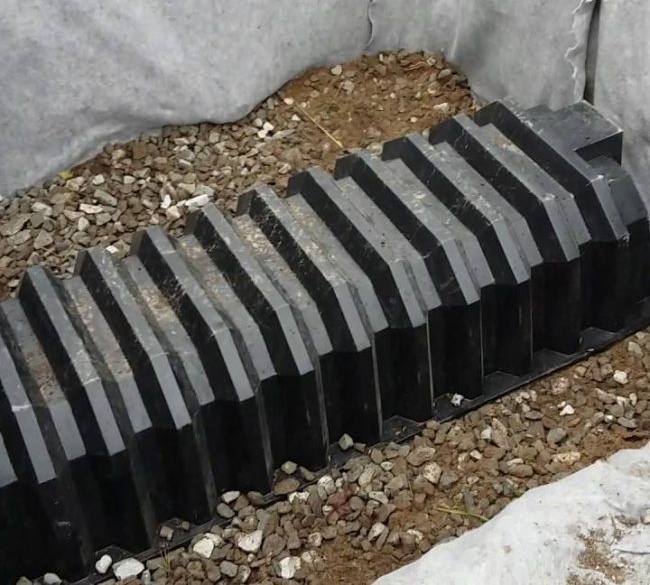
To install the infiltrator, you need to dig a pit, taking into account the dimensions of the element
Video: installation of the Termit septic tank
Operation and Maintenance Tips
The main point of maintenance of Termit septic tanks is the timely pumping out of solid sediments and silt from the receiver. This should be done on average every three years.
After the procedure, it is required to introduce special anaerobic bacteria into the chamber with brushes and fill the entire treatment plant with water. To reduce the septic tank contamination, it is necessary:
- choose a device of suitable volume and performance;
- update the bacterial composition;
- mix the filter granules from time to time.
Experts do not recommend pumping out the sediment completely. It is necessary to leave about 20% so as not to be left completely without bacteria-purifiers.
Proper maintenance of the treatment device extends its operating time and allows less frequent handling of sludge and sludge.
The septic tank Termite comes to the rescue of those who have purchased a country house or a summer cottage away from the central sewer highways. With proper installation and compliance with the operating rules, the unit will last 50 years without any complaints.
